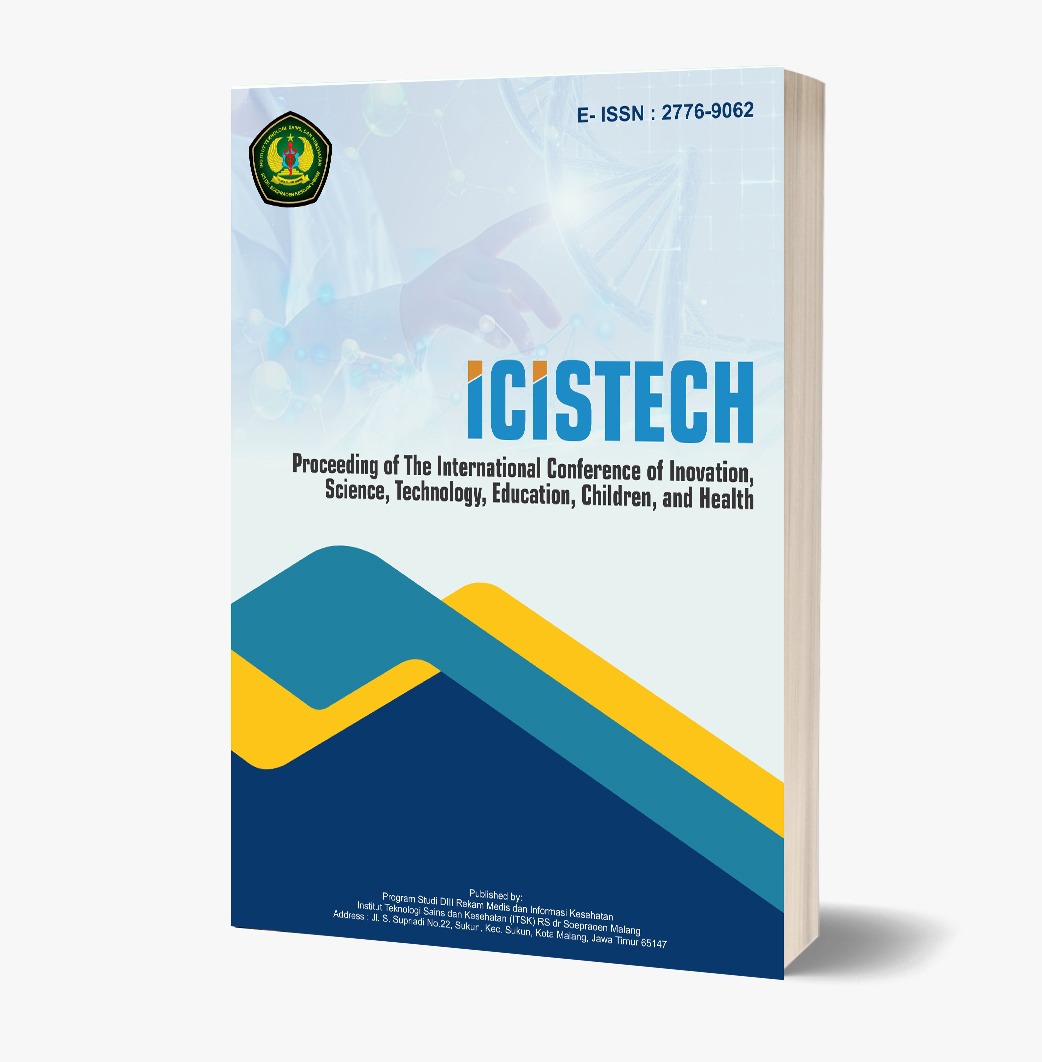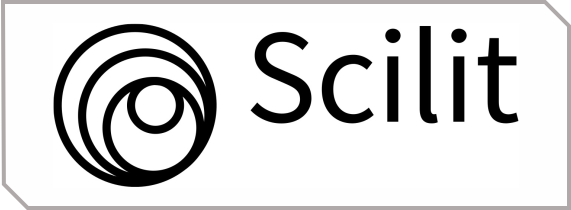The Effect of Mulberry Leaves (Morus alba L) on Blood Pressure and Proteinuria in Rattus Norvegicus Wistar Strain Pre-Eclampsia Model
DOI:
https://doi.org/10.62951/icistech.v5i1.266Keywords:
Mulberry leaves, Preeclampsia, ProteinuriaAbstract
Preeclampsia is a leading cause of maternal morbidity and mortality globally, including in Indonesia. It is characterized by hypertension and proteinuria, which appear after 20 weeks of pregnancy. The pathophysiology of preeclampsia is closely linked to oxidative stress, which is caused by abnormal placentation. One promising alternative treatment for managing preeclampsia is the use of natural ingredients with antioxidant properties, such as mulberry leaves (Morus alba). These leaves contain flavonoids, such as rutin and quercetin, which are known to have antioxidant effects. This study aims to examine the effects of mulberry leaf extract on blood pressure and proteinuria levels in male Wistar rats, using a preeclampsia model. The study employed a true experimental post-test only control group design. A total of 25 pregnant rats were randomly divided into five groups: a negative control group, a positive control group (which was induced with suramin to model preeclampsia), and three treatment groups receiving mulberry leaf extract at doses of 12.5, 25, and 50 mg/kgBW. Blood pressure and proteinuria levels were measured before and after 6 days of treatment. The results indicated that mulberry leaf extract significantly reduced both systolic and diastolic blood pressure and markedly lowered proteinuria levels. A significant relationship was observed between blood pressure and proteinuria (r = 0.528; p = 0.008), suggesting that the reduction in blood pressure was associated with a decrease in proteinuria. These findings suggest that mulberry leaf extract may be a promising natural complementary therapy for alleviating symptoms of preeclampsia, offering an alternative treatment approach to help manage this serious pregnancy complication. Further studies are needed to explore its potential in clinical applications.
References
Ahmed, A., Ahmad, S., Hewett, P. W., & Al-Ani, B. (2011). Autocrine activity of soluble Flt-1 controls endothelial cell function and angiogenesis. Vascular Cell, 3, 15. https://doi.org/10.1186/2045-824X-3-15
Cindrova-Davies, T., Sanders, D. A., & Burton, G. J. (2011). Soluble FLT1 sensitizes endothelial cells to inflammatory cytokines by antagonizing VEGF receptor-mediated signalling. Cardiovascular Research, 89(3), 671-679. https://doi.org/10.1093/cvr/cvq346
Davis, E. F., Newton, L., Lewandowski, A. J., & Lazdam. (2012). Pre-eclampsia and offspring cardiovascular health: Mechanistic insights from experimental studies. Clinical Science, 123(2), 53-72. https://doi.org/10.1042/CS20110627
Giachini, F. R., Galaviz-Hernandez, C., & Damiano, A. E. (2017). Vascular dysfunction in mother and offspring during preeclampsia: Contributions from Latin-American countries. Current Hypertension Report, 19(10). https://doi.org/10.1007/s11906-017-0781-7
Gondo, H. K. (2016). Efek protektif phycocyanin terhadap preeklampsia melalui hambatan jalur inflamasi, stres oksidatif dan apoptosis sel trofoblas. Universitas Brawijaya: Malang.
Hidayat, S., & Rodame, M. N. (2015). Kitab Tumbuhan Obat. Agriflo.
Indrawan, I. (2017). Peranan ekstrak etanol biji jinten hitam menurunkan kadar IL-1b, IFNg, endothelin-1 mencit model preeklamsia melalui penghambatan aktivasi p65. Program Studi Doktor Ilmu Kedokteran Fakultas Kedokteran Universitas Brawijaya.
Kvehaugen, A. S., Dechebd, R., Ramstad, H. B., & Troisi, R. (2011). Endothelial function and circulating biomarkers are disturbed in women and children after preeclampsia. Hypertension, 58(1), 63-69. https://doi.org/10.1161/HYPERTENSIONAHA.111.172387
Matsubara, K. (2017). Hypoxia in the pathogenesis of preeclampsia. Hypertension Research in Pregnancy, 5(2), 46-51. https://doi.org/10.14390/jsshp.HRP2017-014
Myrank. (2009). Bebas hipertensi tanpa obat. Agromedia.
Nugraheny, D., Permatasari, N., & Saifur Rohman, M. (2017). Physalis minima leaves extract induces re-endothelialization in deoxycorticosterone acetate-salt-induced endothelial dysfunction in rats. Research Journal of Life Science, 4(3), 199-208. https://doi.org/10.21776/ub.rjls.2017.004.03.6
Ornaghi, S., & Paidas, M. J. (2014). Upcoming drugs for the treatment of preeclampsia in pregnant women. Expert Review of Clinical Pharmacology, 7(5), 599-603. https://doi.org/10.1586/17512433.2014.944501
Parsanezhad, M. E., Attar, A., Namavar-Jahromi, B., & Khoshkhou, S. (2015). Changes in endothelial progenitor cell subsets in normal pregnancy compared with preeclampsia. Journal of the Chinese Medical Association, 78(6), 345-352. https://doi.org/10.1016/j.jcma.2015.03.013
Raghupathy, R. (2013). Cytokines as key players in the pathophysiology of preeclampsia. Medical Principles and Practice, 22(suppl 1), 8-19. https://doi.org/10.1159/000354200
Robinson, M. B., & Sasodo, J. (2005). Pekan ulat sutra morus. [Online]. Available: http://Ipi.oregons tate.edu/infocenter/phytochemicals/garlic/#table1
Salman, S., Kumbasar, S., & Yilmaz, M. (2011). Investigation of the effects of the chronic administration of some antihypertensive drugs on enzymatic and non-enzymatic oxidant/antioxidant parameters in rat ovarian tissue. Gynecological Endocrinology, 27(11), 895-899. https://doi.org/10.3109/09513590.2010.551564
Sipos, P. I., Crocker, I. P., & Hubel, C. A. (2010). Endothelial progenitor cells: Their potential in the placental vasculature and related complications. Placenta, 31(1), 1-10. https://doi.org/10.1016/j.placenta.2009.10.006
Downloads
Published
How to Cite
Issue
Section
License
Copyright (c) 2025 Proceeding of The International Conference of Inovation, Science, Technology, Education, Children, and Health

This work is licensed under a Creative Commons Attribution-ShareAlike 4.0 International License.













